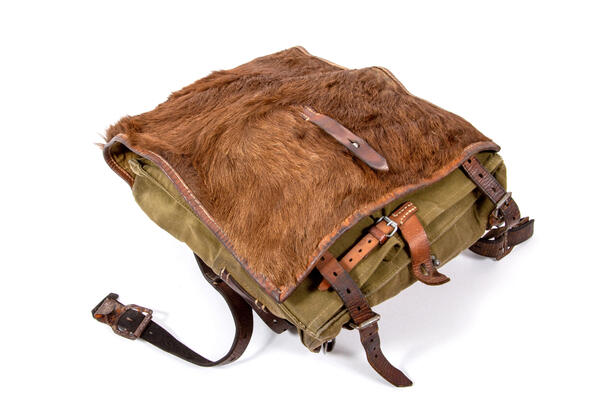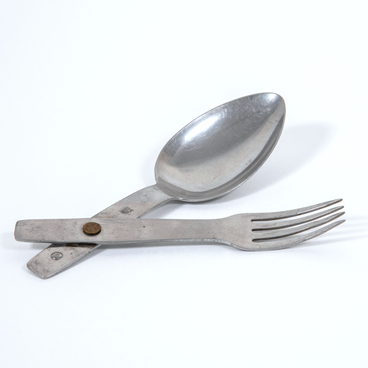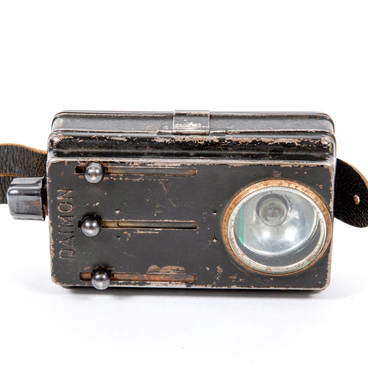The German equipment of the Second World War looked a lot like the one used in the First World War. The Tornister 34 backpack, displayed in the museum, became part of the German army equipment in November 1934.
The backpack was made of a dense water-repellent olive-green tarpaulin. It had a calfskin covered frame. It also had leather corners and straps and the outer flap was covered with calfskin. Later, as the economic situation deteriorated during the war, some of the backpacks were made only with a canvas cover.
The manufacturer’s mark was placed on a wide leather strip at the top of the backpack where it connects to the back. The manufacture of backpacks, as well as the production of most items of the German equipment, was carried out by private firms. The name of the company, the city in which it was located, and the year of manufacture were usually indicated on the products. After the invasion of Poland, Germany obliged all its military contractors to put three-letter designations instead — in order to hide the sources of military production.
The backpack displayed in the collection was made in 1940 at the Gebruder Kruger Lederwarenfabrik & Lederfarberei factory in Breslau (Wroclaw, Poland). In addition to backpacks, this company produced leather holsters for personal weapons.
In the field, military personnel signed their backpacks with chemical pencils and indicated the initials or their full name, and sometimes their unit number.
Five years after the release of the 1934 design backpacks, the Tornister 39 was developed. Their contents were the same and strictly regulated. In the main compartment, there were shoes with laces, which were placed with the soles to the side. In the left shoe, they kept a cream and a cloth, and shoe brushes in the right one. A mess tin with biscuits was stored in a special pocket. In the same compartment, they put a bag with camping gear such as a black two-meter rope and wooden pegs. They kept weapon cleaning kits nearby wrapped in a case, a pair of wool socks, a warm sweater, and emergency food — canned meat.
The backpack was made of a dense water-repellent olive-green tarpaulin. It had a calfskin covered frame. It also had leather corners and straps and the outer flap was covered with calfskin. Later, as the economic situation deteriorated during the war, some of the backpacks were made only with a canvas cover.
The manufacturer’s mark was placed on a wide leather strip at the top of the backpack where it connects to the back. The manufacture of backpacks, as well as the production of most items of the German equipment, was carried out by private firms. The name of the company, the city in which it was located, and the year of manufacture were usually indicated on the products. After the invasion of Poland, Germany obliged all its military contractors to put three-letter designations instead — in order to hide the sources of military production.
The backpack displayed in the collection was made in 1940 at the Gebruder Kruger Lederwarenfabrik & Lederfarberei factory in Breslau (Wroclaw, Poland). In addition to backpacks, this company produced leather holsters for personal weapons.
In the field, military personnel signed their backpacks with chemical pencils and indicated the initials or their full name, and sometimes their unit number.
Five years after the release of the 1934 design backpacks, the Tornister 39 was developed. Their contents were the same and strictly regulated. In the main compartment, there were shoes with laces, which were placed with the soles to the side. In the left shoe, they kept a cream and a cloth, and shoe brushes in the right one. A mess tin with biscuits was stored in a special pocket. In the same compartment, they put a bag with camping gear such as a black two-meter rope and wooden pegs. They kept weapon cleaning kits nearby wrapped in a case, a pair of wool socks, a warm sweater, and emergency food — canned meat.



